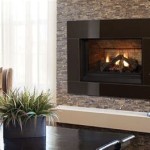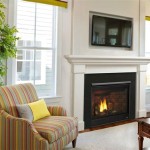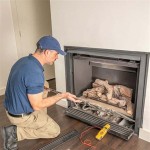Wood Burning Fireplace Reviews: A Comprehensive Guide
Wood burning fireplaces offer a timeless appeal, providing warmth, ambiance, and a focal point for living spaces. Selecting the right wood burning fireplace involves careful consideration of various factors, including heating capacity, efficiency, design, safety features, and regulatory compliance. This article provides a comprehensive overview of wood burning fireplaces, analyzing different types, key features, and considerations to assist in making an informed purchase decision.
Types of Wood Burning Fireplaces
Wood burning fireplaces are available in several forms, each with specific characteristics and installation requirements. The primary types include traditional masonry fireplaces, prefabricated fireplaces, and wood burning fireplace inserts.
Masonry Fireplaces: These are constructed on-site using bricks, stones, or concrete blocks. Masonry fireplaces are typically custom-designed and can be integrated into the architectural style of the home. They are known for their durability and aesthetic appeal, but they often have lower heating efficiency compared to other types due to heat loss through the chimney and masonry structure. Masonry fireplaces require professional construction and can be more expensive to install than prefabricated options. Proper construction is crucial to ensure safety and prevent chimney fires.
Prefabricated Fireplaces: Also known as factory-built fireplaces, these units are manufactured in a factory and shipped to the installation site as a complete system. Prefabricated fireplaces consist of a firebox, chimney system, and decorative surround. They are typically made of steel or cast iron and are designed for easier and less expensive installation than masonry fireplaces. Prefabricated fireplaces often offer higher heating efficiency than traditional masonry fireplaces due to their insulated fireboxes and controlled air intake systems. They are available in a variety of styles and sizes to suit different aesthetic preferences and heating needs.
Wood Burning Fireplace Inserts: These units are designed to be installed inside an existing masonry fireplace. Wood burning fireplace inserts offer a more efficient and cleaner-burning alternative to traditional open fireplaces. They typically feature a sealed firebox, glass door, and a blower fan to circulate heat into the room. Inserts can significantly improve the heating efficiency of an existing fireplace and reduce emissions. Installation requires a flue liner to be installed in the existing chimney to ensure proper venting and safety. The size and design of the insert must be compatible with the dimensions of the existing fireplace opening.
Key Features and Considerations
When selecting a wood burning fireplace, several key features and considerations should be taken into account to ensure optimal performance, safety, and satisfaction.
Heating Capacity and Efficiency: The heating capacity of a wood burning fireplace is measured in British Thermal Units (BTUs). The appropriate BTU output depends on the size of the area to be heated and the climate. Higher BTU ratings are suitable for larger spaces or colder climates. Heating efficiency refers to the percentage of heat produced by the fireplace that is effectively transferred into the room. Traditional masonry fireplaces typically have lower efficiency ratings (around 10-20%) compared to prefabricated fireplaces and inserts (which can reach 70-80% or higher) due to heat loss through the chimney. Look for fireplaces that have been tested and certified by the EPA for efficiency and emissions.
Emissions and Air Quality: Wood burning fireplaces can contribute to air pollution due to the release of smoke and particulate matter. The Environmental Protection Agency (EPA) has established emission standards for wood burning appliances to reduce air pollution. Look for fireplaces that are EPA-certified and meet current emission standards. Features such as catalytic combustors and non-catalytic combustion systems can help to reduce emissions and improve air quality. Proper operation and maintenance, including burning dry, seasoned wood, are essential for minimizing emissions.
Safety Features: Safety is a paramount concern when operating a wood burning fireplace. Key safety features include a spark screen or glass door to prevent embers from escaping the firebox, a chimney cap to prevent rain and debris from entering the chimney, and a carbon monoxide detector to alert occupants of the presence of dangerous levels of carbon monoxide. Regular inspection and cleaning of the chimney are essential to prevent chimney fires caused by creosote buildup. It is also important to follow all manufacturer's instructions for safe operation and maintenance.
Design and Aesthetics: Wood burning fireplaces are available in a wide range of designs and styles to complement different architectural styles and interior decor. Options include traditional brick or stone surrounds, contemporary metal finishes, and various sizes and shapes. Consider the overall aesthetic of the room and choose a fireplace that enhances the visual appeal of the space. Fireplace inserts can be customized with decorative fronts and surrounds to match the existing decor. The design should also consider functionality, such as ease of access for loading wood and cleaning the firebox.
Installation Requirements: The installation requirements for wood burning fireplaces vary depending on the type of fireplace and local building codes. Masonry fireplaces require professional construction by experienced masons. Prefabricated fireplaces and inserts can be installed by qualified installers, but it is important to follow all manufacturer's instructions and building codes. Proper venting is crucial for all types of wood burning fireplaces to ensure safe and efficient operation. A properly sized and installed chimney is essential for removing smoke and combustion gases from the home. Permits may be required for the installation of wood burning fireplaces, and it is important to check with local authorities for specific requirements.
Fuel Type and Storage: Wood burning fireplaces require dry, seasoned wood as fuel. The type of wood used can affect the heat output, burn time, and emissions. Hardwoods, such as oak, maple, and ash, typically provide higher heat output and longer burn times than softwoods, such as pine and fir. Wood should be properly seasoned (dried) for at least six months to reduce moisture content and improve combustion. Storing wood in a dry, covered location will help to prevent rot and maintain its quality. Avoid burning treated or painted wood, as these materials can release harmful chemicals into the air.
Specific Fireplace Model Reviews
To provide comprehensive information, we will discuss examples of various fireplace model reviews based on general market trends and popular features, but it's important to check current reviews and specifications from reputable sources before making a purchase.
Example 1: Regency Hampton HI300E Wood Insert
This EPA-certified wood insert is often praised for its high heating efficiency and clean burning capabilities. Reviews frequently highlight its ability to transform an existing inefficient masonry fireplace into a powerful heat source. The insert typically features a large firebox, allowing for longer burn times, and a built-in blower to distribute heat evenly throughout the room. The Hampton HI300E is also often commended for its aesthetically pleasing design, with various customizable options to match different decor styles. However, some reviews mention that the initial cost of the insert and installation can be relatively high compared to other options. A proper flue liner installation is essential for optimal performance and safety.
Example 2: Napoleon EPI3T Wood Burning Fireplace Insert
The Napoleon EPI3T is another highly regarded wood burning fireplace insert known for its robust construction and efficient heating. Reviews often emphasize its advanced airwash system, which helps to keep the glass door clean for a clear view of the fire. The EPI3T typically features a durable cast iron firebox and a high-efficiency baffle system that promotes complete combustion, reducing emissions and maximizing heat output. Users often appreciate the ease of use and maintenance, as well as the elegant design that complements various fireplace styles. Some reviews may mention that the insert is relatively heavy, requiring careful installation. It is critical to ensure the existing fireplace structure can support the weight of the insert.
Example 3: Majestic Biltmore 42" Wood Burning Fireplace
This prefabricated wood burning fireplace offers a balance of traditional aesthetics and modern features. Reviews often highlight its large viewing area and realistic brick liner, which creates a cozy and inviting atmosphere. The Biltmore 42" typically features a durable steel firebox and a refractory lining that helps to retain heat. The fireplace is designed for relatively easy installation and can be customized with various decorative options. Some reviews may note that the heating efficiency is lower compared to fireplace inserts, but it still provides adequate warmth for smaller living spaces. Proper installation of the venting system is essential for safe and efficient operation. Regular chimney cleaning is also recommended to prevent creosote buildup.
Example 4: Rumford Masonry Fireplace Design
While not a specific product, the Rumford design is a historic and popular style for masonry fireplaces. Reviews and historical accounts suggest that Rumford fireplaces are known for their efficient heating and ability to radiate heat effectively into the room. The design features a shallow firebox and a tall, narrow throat that helps to draw air and improve combustion. Rumford fireplaces are often appreciated for their elegant and timeless aesthetic. However, construction requires skilled masons familiar with the specific design principles. Improper construction can lead to poor performance and potential safety hazards. Maintenance involves regular chimney cleaning and inspection to ensure proper venting.
These examples illustrate the diverse range of wood burning fireplaces and inserts available on the market. It is crucial to research specific models, read customer reviews, and consult with qualified professionals to determine the best option for your individual needs and preferences.
Ultimately, selecting a wood burning fireplace is a significant investment. Thorough research and consideration of the factors outlined in this article will help ensure a safe, efficient, and enjoyable heating experience.

Osburn 3500 Wood Stove Insert With Blower Epa Approved Review Forestry Reviews

Why A Wood Burning Fireplace Insert Bethesda Md Service

Osburn 3500 Wood Burning Fireplace Insert 31 Ob03510 Hvacdirect Com

S25i Napoleon

Ventis Hei240 Wood Burning Insert

Best Wood Burning Fireplace Inserts Of 2024 Forestry Reviews

Wood Burning Fireplace Inserts Insert Installation

Which Is Better For Your Home Freestanding Stove Vs Fireplace Insert

Large Flush Wood Rectangular Nexgen Fyre Made In America Fireplace Xtrordinair

Napoleon Epi3 Wood Fireplace Insert Inserts By
Related Posts








